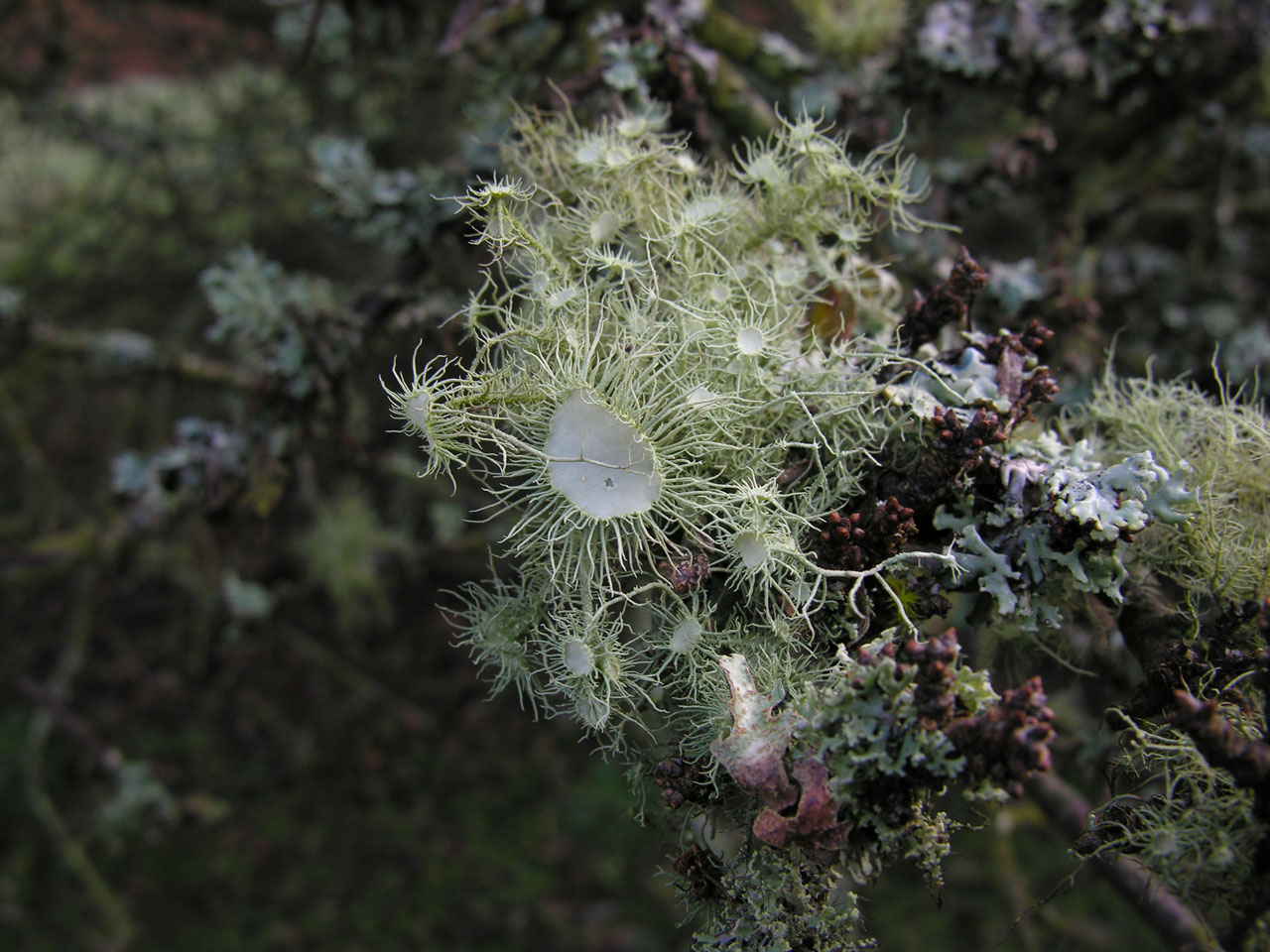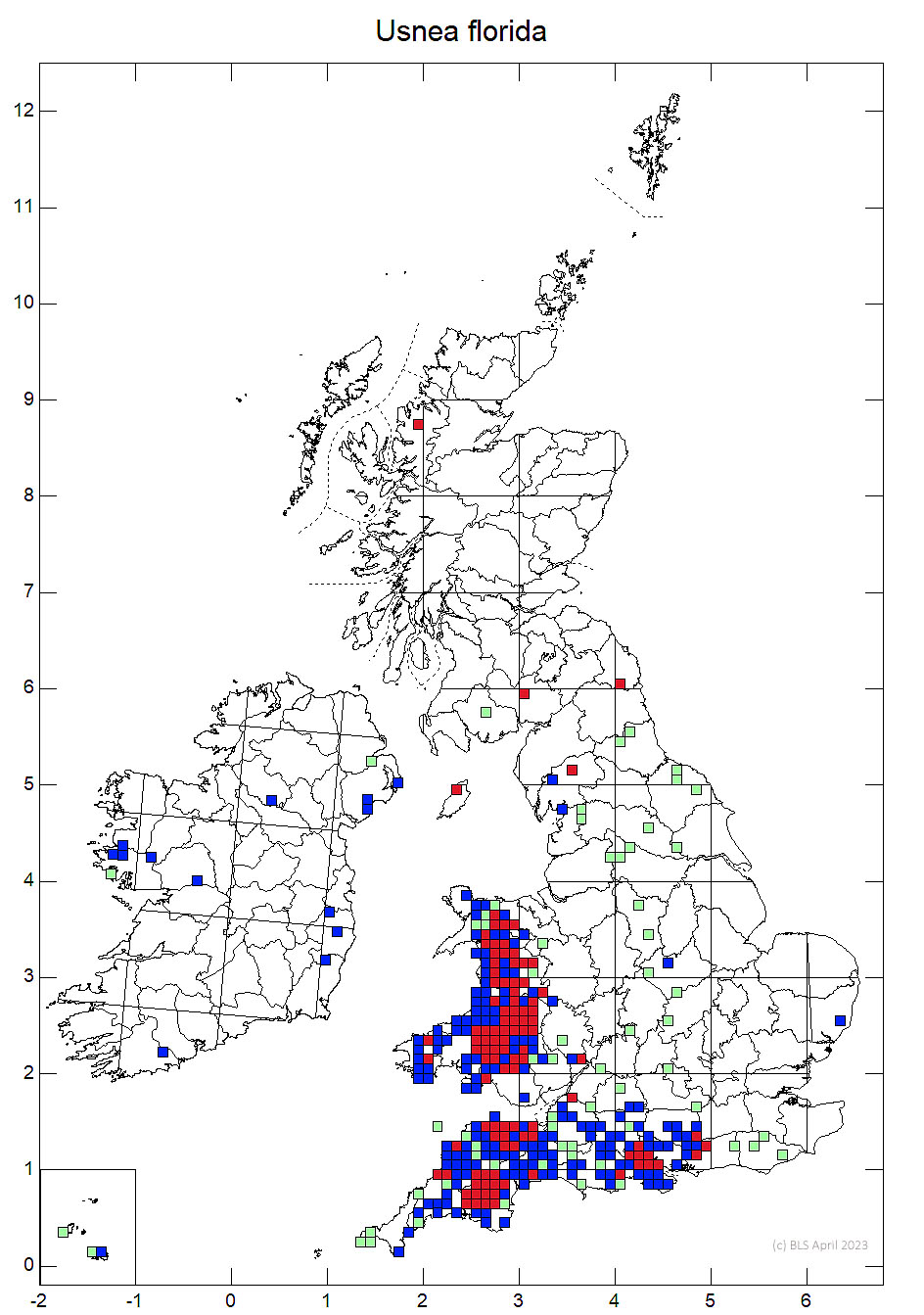Usnea florida
Thallus yellow-green to grey- green, bushy, up to 5 cm tall. Base persistent and generally cracked and blackened. Medulla thin with a stout central core. Main and secondary branches have many pointed branchlets but have no isidia or soralia. Fawn apothecia (up to 1 cm) are frequent at the end of branches. They are surrounded by ray-like spinulose branchlets.
Chemistry: Medulla K+ yellow, P+ orange-red.
Similar species: Usnea subfloridana and U. wasmuthii are similar when fertile but with fewer apothecia and with both isidia and soralia.
See also Fungi of Great Britain and Ireland
Mainly on twigs and branches in the canopy of broad-leaved trees but occasionally on other exposed, well-lit surfaces. In sheltered and humid locations.

South and West of Britain and Ireland, but rare in Southern Scotland.
Very sensitive to ammonia pollution and declining due to agricultural intensification
Britain: Near Threatened
England: Section 41 species
Wales: Section 7 species
Scotland: Priority Taxon for Biodiversity in Scotland
Text by David Brabban & Neil A Sanderson
Presentation on the location of apothecia on Usnea florida and subfloridana - Isobel Clark.

